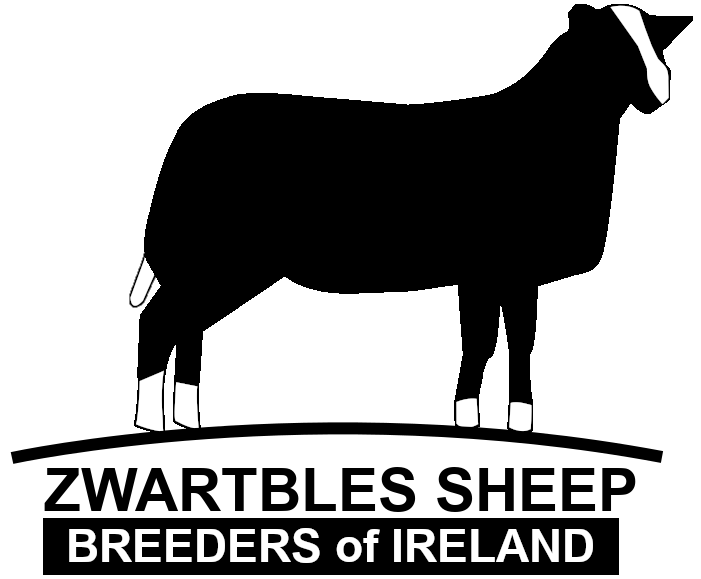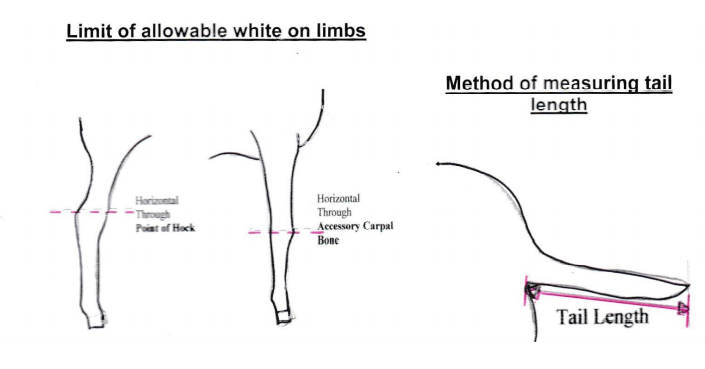
Zwartbles Sheep Breeders of Ireland
History of the breed
The history of the Zwartbles as a sheep breed starts in the late 19th and early 20th Centuries. It is thought that the Zwartbles breed is descended from a relatively large breed of sheep called the Schoonebeker which grazed the heathlands of North East Holland.
Some of the lambs had badger face markings not unlike the Zwartbles. If you look at the pictures of the Schoonebeker you can see the resemblance including the slight roman noses, long neck and erect posture. A number of Friesian farmers decided to line breed these “Zwartbles “ Schoonebeker sheep and with some influence from Friesian Milk sheep and Texel’s the modern day Zwartbles was developed and in 1985, the Dutch set up the first Zwartbles flockbook.
Zwartbles were originally imported into the UK in 1986 with numbers steadily increasing in the following years. In 1995 the Zwartbles Sheep Association was formed.
The first Zwartbles were imported into the Republic of Ireland in 2005 by our own Honorary President, Mr Ray Sweeney of the Millrace flock. Irish breeders registered their sheep with the UK flockbook until January 2021, when the Irish Zwartbles Sheep Association was formed, which later went on to amalgamate with Zwartbles Eire and become the Zwartbles Sheep Breeders of Ireland.
Breed Standard
A breed standard in animal breeds is a set of guidelines which is used to ensure that the animals produced by a breeder conform to the specifics of the breed. It is the template to which the breed aspires. Not all sheep are born with the correct features or markings and absence of these does not prevent the breeder from registering the animal, but nevertheless, that registered sheep may still be deemed not to meet the breed standard. The Zwartbles have good confirmation, with a big frame, medium bone, good length and a wide pelvis. A tall sheep, with a striking and naturally polled head, a long neck and an erect posture. It is an upright and fully built sheep with an alert and lively character. Rams have a more muscular formed front part and wider head. Colour/Markings
a) Fleeces should be thick and springy with a good crimp, with a true black base colour (though naturally bleached brown tips and age-related grey may occur). The fleece does not grow onto the head which, like the legs, is covered with hair.
b) Blazes should be uninterrupted and reasonably straight and may be any width and may continue under the chin, but not into the wool. The white blaze should run from the crown of the head and may include the muzzle. Pink or black noses are acceptable.
c) Tails should be straight and have a readily discernible white tip which should not extend more than ½ the way up its length in both ewes and rams (See diagram)
d) Two to four white socks - If only two they must both be on the hind legs. The sock should encircle the leg and touch the hoof at one or more places. Socks/stockings should not be above the knee or hock (See diagram) Please note it is preferred that the white does not extend this far.
e) There should be no white in the fleece, on the ears or belly.

MEASUREMENT OF THE TAIL LENGTH is taken from underneath. If for example the tail measures 30cm then the white should not extend more than 15cm AT ANY POINT on the tail.
General Description of body shape and confirmation
Head: The head must be long and narrow with a straight to very slightly
roman nose.
Ears: These must be proportionately large and should be placed
horizontally to erectly. Drooping ears are undesirable.
Neck: Necks must be proportionately fairly long and flexible, and the
latter should be carried erectly. A ram’s neck must be more muscular
and somewhat wider.
Shoulders: These should be strong and slightly sloping.
Breast: This should be well-developed and moderately, but not excessively
Wide. Viewed from the side the breast should protrude between the
front legs. An adult Zwartbles ewe should have stomach and udder
at the lowest points.
Back: With the erect head and neck the back should run straight with
easily detectable vertebrae.
Ribs: From the back the ribs should be round and long.
Rump: bThis should be long, slightly rounded, strong with a wide pelvis.
It ensures easy lambing and room for wide udder placement. The top
of the rump can be a few cm higher than the withers and the ‘sitting
part of the rump can be a few cm lower than the hips.
Thighs: These should be muscular, long and well rounded.
Legs: These should be long with medium to fine bone and correct
Pasterns. Pasterns that are too upright or collapsed are incorrect.
(See diagram). Correct Zwartbles posture includes straight and
equidistantly placed legs. The front legs of good tall ewes tend to come
in very slightly from the shoulder to the knee and then straight from
the knee to the hoof, but should not be rotated outwards.
Hooves: These may be black, striped or white
Tail: bThe tail should be well set on and undocked.
Gait: The gait should be brisk, straight and springy.
Genitalia: bThe scrotum of a ram should be finely haired and not wolly. The
testes should be well developed, firm and of a similar size.
Height: The ideal adult height at the withers for ewes is from 75cm and
Rams from 85cm.